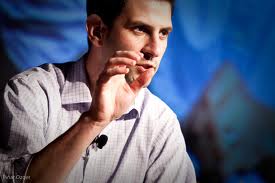 Yesterday, in a WSJ series on venture capitalists’ predictions for 2014, Managing Partner Scott Kupor of Andreessen Horowitz was asked if “venture capital returns have improved enough to draw renewed limited-partner interest in 2014.”
Yesterday, in a WSJ series on venture capitalists’ predictions for 2014, Managing Partner Scott Kupor of Andreessen Horowitz was asked if “venture capital returns have improved enough to draw renewed limited-partner interest in 2014.”
Kupor said the question was really “whether investment dollars will continue to be concentrated in the top firms that enable them to generate above-average returns.”
Kupor shied from saying that fundraising for Andreessen Horowitz will be a walk in the park as always, but it’s a safe bet to make. In fact, it’s likely that Andreessen Horowitz will announce its next big fund in January or very soon after. (The firm declined to comment for this story.)
Consider, for starters, that early last week, the firm announced a new general partner, Balaji Srinivasan, who cofounded a genetic-testing company that makes a saliva-based test for more than 100 serious inheritable diseases. VCs don’t always bring in fresh GPs before a new fund raise, but it’s a little cleaner that way. And Srinivasan gives Andreessen Horowitz an even stronger case to make to investors, given his background in consumer-facing healthcare — an increasingly attractive area of investment where he bolsters Andreessen Horowitz’s expertise.
It’s been almost two years since Andreessen Horowitz debuted two funds totaling $1.5 billion. Most venture firms raise money every three years, but that’s never been the modus operandi of Andreessen Horowitz, whose biggest bets include Skype, Twitter, Facebook, and GitHub. (Readers might recall that Andreessen Horowitz collected $300 million for its first fund in 2009, $600 million for its second fund in 2010, and a $200 million co-investment fund in 2011, before announcing its biggest funds to date – a $900 million fund with a $600 million parallel fund — in January 2012.)
A little basic math also points to a new fund in the very near future. When I sat down with firm cofounder Marc Andreessen in mid-October, he told me then that the firm’s third fund was “about 70 percent committed.” And if you’ve been following the news, you’ll notice the firm has led a string of very big investments since.
Yesterday, Crowdtilt, a crowdfunding platform, announced it had raised $23 million in Series B funding led by Andreessen Horowitz. Last Friday, the startup Oculus VR revealed that it had raised $75 million to more broadly market its virtual reality headset. Its lead investor: Andreessen Horowitz. And last Wednesday, Andreessen Horowitz made a giant bet on Bitcoin, leading a $25 million investment in Coinbase, a company that makes it easier to buy and sell the digital currency.
That’s saying nothing of the smaller deals that Andreessen Horowitz has helping to fund, including Koru, a young education startup, and Doctor on Demand, a new company behind a mobile app that connects users with physicians for a consultation fee.
For a gun-slinging firm that likes to make outsize bets when it spies the chance, that doesn’t leave a lot dry powder — especially when taking into account reserves for follow-on fundings.
“We’ll probably raise a new fund next year,” Andreessen had told me back in October. My guess: we can expect it much sooner than later.
Sign up for our morning missive, StrictlyVC, featuring all the venture-related news you need to start you day.






































